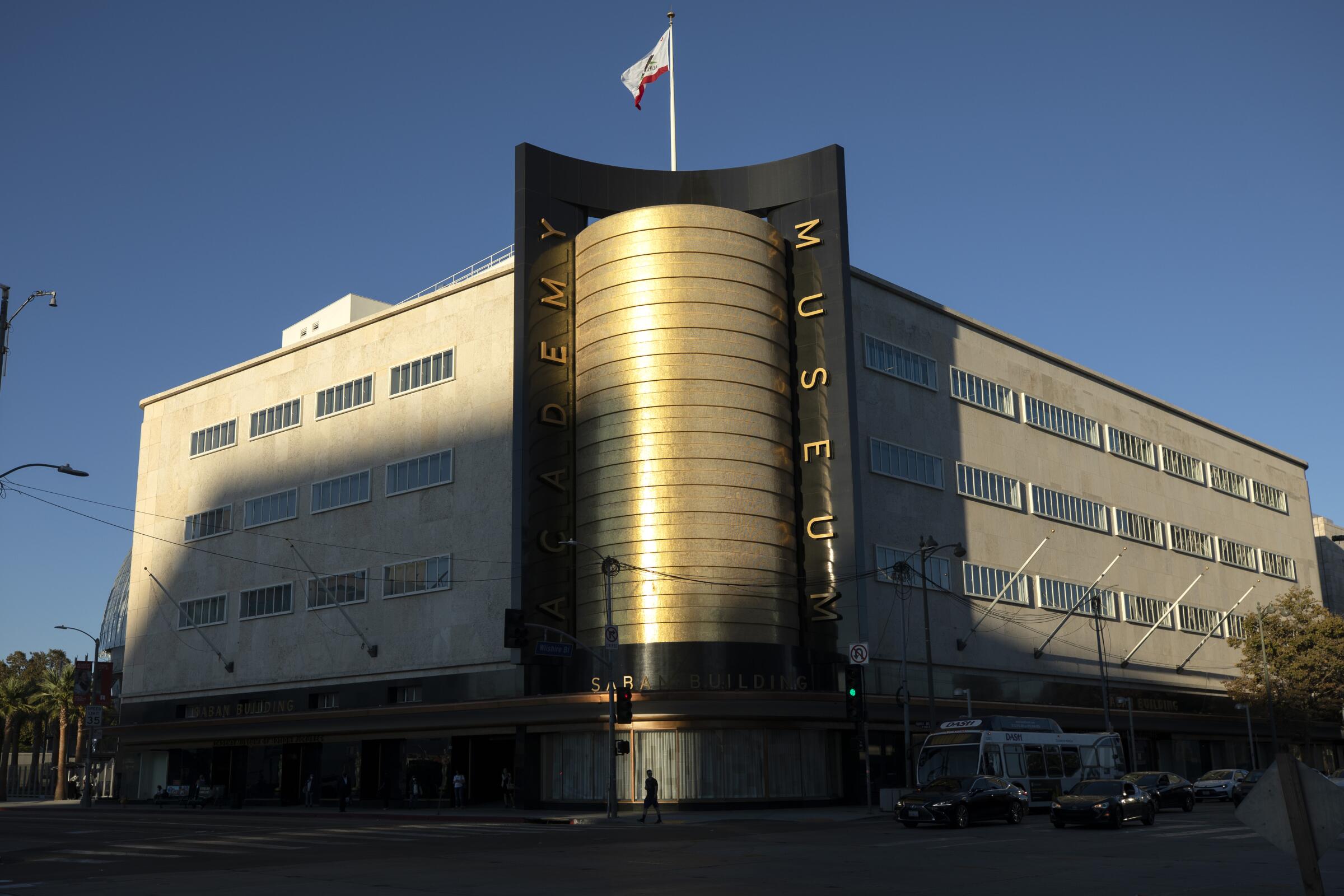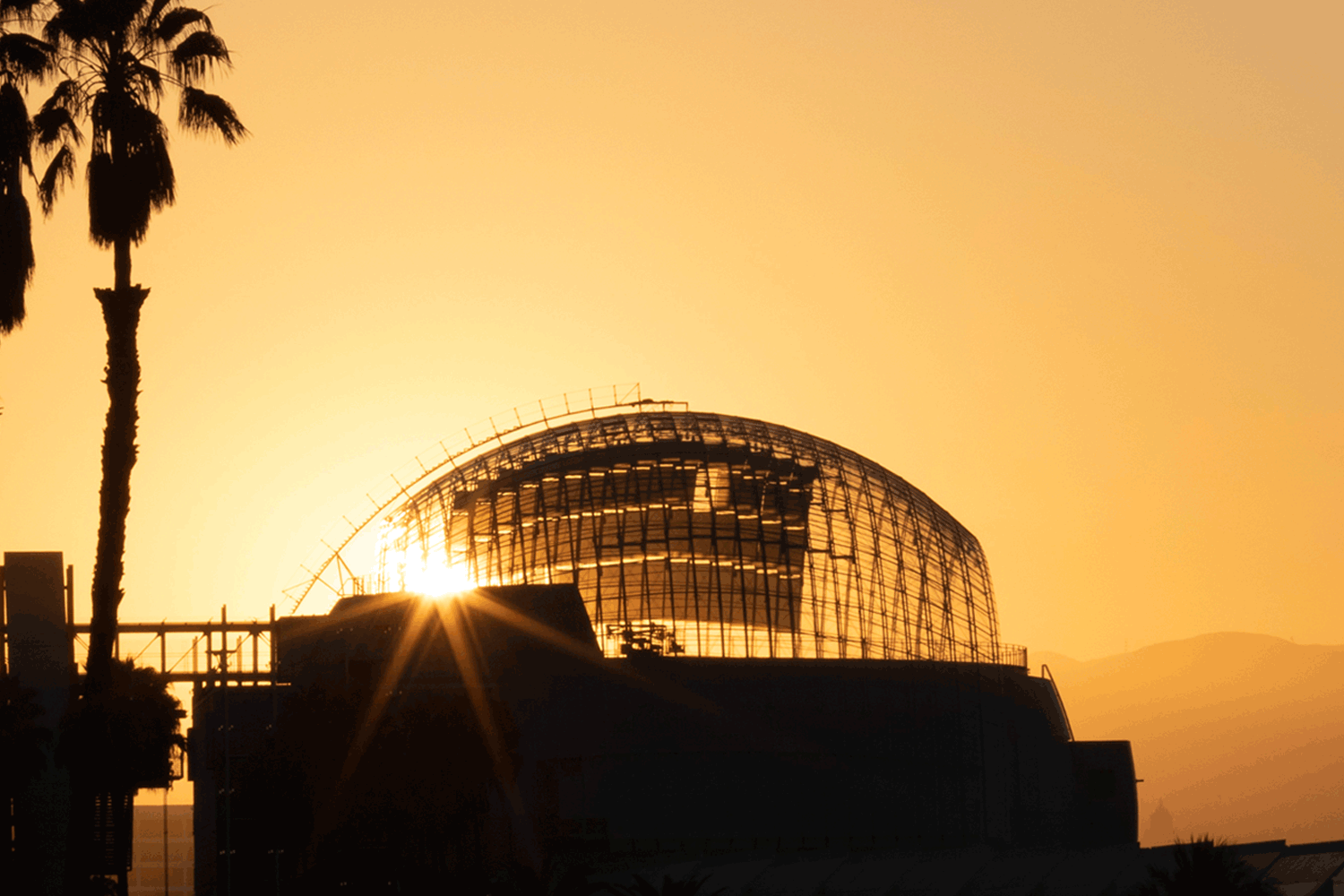Change is hard, messy and almost always imperfectly implemented — for every two people it pleases there is at least one who’s ticked off.
No organization knows this more viscerally than the film academy. After decades of elitist calcification, it has spent the better part of the past six years making changes, none of which, from its long-overdue expansion of its own membership to its recent decision to shove eight categories out of the main Oscar telecast, came without controversy.
So there was no reason to believe its brand new museum would escape criticism.
And it did not. The Academy Museum of Motion Pictures was not far past its 2021 opening when people began asking how, in a museum devoted to a diverse and varied examination of filmmaking, the people who created the industry were largely, and alarmingly, absent.
Especially since most of the industry’s founders were Jewish.
The Academy of Motion Picture Arts and Sciences had long been clear that its museum would not take a traditional, chronology based “history of Hollywood” approach; it would celebrate film and the people who make it thematically, with a focus on inclusiveness. But so many of the early studio heads, including Samuel Goldwyn, Louis B. Mayer, William Fox, Jack and Harry Warner, and Carl Laemmle, had battled antisemitism here and in Eastern Europe, that their absence seemed very much at odds with both a celebration of film and a desire to be inclusive.
“There would literally be no museum, no industry without them,” wrote Sharon Rosen Leib in one of the first pieces decrying the lack of Jewish representation.
Or as Anti-Defamation League CEO Jonathan Greenblatt told Rolling Stone, “As I walked through, I literally turned to the person I was there with and said to him, ‘Where are the Jews?’”
“They’re coming,” was the museum’s answer. Answering accusations that the museum was erasing Hollywood’s Jewish roots, Bill Kramer, the museum’s director and president, quickly pointed out that an exhibit on Hollywood’s founders was slated to open in spring 2023, and, in consultation with museum staff and donors, including alpha donor Haim Saban, it was decided that exhibit would become permanent.
Announced officially Monday, “Hollywoodland” is one of eight new exhibits coming to the museum in the next 12 months and will tell the story of how and why Los Angeles became the center of filmmaking, with an emphasis on who made that happen.
“We’ve always planned to have as part of our first round of rotations an exhibit on the founders,” said Kramer in an interview last month. “This is an origin story of Los Angeles. It’s so important for this, the only museum devoted to movies, to understand why we are in Los Angeles, how did that start?”
Kramer pointed out that one of the first film programming series, “Vienna in Hollywood: Emigres and Exiles in the Studio System,” dealt specifically with the impact Jewish filmmakers had on the world. “It’s an important story to tell that story of oppression,” he said. “Even if these people became very successful, it is still there.”
“We knew when we opened we would get notes from people about things they would like to see,” Kramer said. “More musicals, more comedies, more representation of producers — our museum should be a place for that sort of discourse. This is a much larger issue than what is happening with our museum, but we can have a conversation around that, about Jewish representation in Hollywood and also in the larger culture.”
By eschewing a permanent collection in favor of endlessly rotating exhibits, the Academy Museum has given itself a unique elasticity in how it approaches its subject matter. Opening this August, “Regeneration: Black Cinema 1898-1971” will look at the work of Black filmmakers from the art form’s beginning to the civil rights movement. Coming this fall is an in-depth look at the making of “The Godfather” and an exploration of director Agnes Varda. Early next year, exhibits devoted to “Boyz N the Hood,” “Casablanca,” documentarian Lourdes Portillo and the work of production designer Sarah Greenwood and set decorator Katie Spencer will open.
“We have the next five years mapped out,” Kramer said. “This is not a museum that opens and that’s it. We’ve created an institution intentionally to bring in many stories. They have always been there, they’ve just not been the dominant narratives. Obviously,” he added, “the dominant narratives are important but we can have both.”
It’s an interesting way to think of a film museum, more like an anthology series than a movie, but film is the original multiverse, as wide as the heavens, as intimate as a beloved face, and its symbiotic relationship with the larger culture is all but impossible to describe.
In shaking off the conventional historical experience — those endless photos of orange groves where soon the mighty studios would stand, etc.— the museum chose the culture of conversation over the tradition of edifying timeline. It’s a smart move for many reasons, not the least of which is the narrow nature of most of those timelines.
Conversations, however, are just as difficult and messy as the change that often arises from them. Looking at any attempt to increase diversity, it’s easy to slip into a false narrative about identity politics and the box-ticking tyranny of inclusion — someone is always unhappy, it seems.
Well, yes. We have been fed a homogenized portrait of society for so long that the challenge of representing who we really are, in all our infinite variety, often seems insurmountable, fueled by complaint and nagging reminders. #Oscarssowhite, or “Where are the [fill in the blank]”?
Right here. The fill-in-the-blanks are, and have always been, right here, all along, living and working, doing wonderful, terrible and ordinary things. But too many remain mired in the prejudice and oppression of invisibility. So if we don’t keep asking, and reminding, and demanding, we will be stuck with the same old narrow timelines and selective portraits.
Call it identity politics if you want, but only in the sense that we must finally identify the true nature of the world.
Now that’s a lot to ask from a museum, even a museum focused on film, which has its own history of exclusion and illumination. And like the film industry itself, the Academy Museum is grappling with a modern world where the collective attention is by turns restlessly scanning the horizon, and suddenly intensely absorbed, obsessively drilling down to a granular level. Making it an upscale version of “It’s a Small World” isn’t going to work.
Certainly, it would have made sense for “Hollywoodland” to be part of the museum’s opening exhibits — the fact that an industry still struggling to overcome its own system of disenfranchisement was in fact begun by a group of disenfranchised people, is worth discussing, especially in a space that is so vocally devoted to inclusion.
Now, with any luck, it will be.










